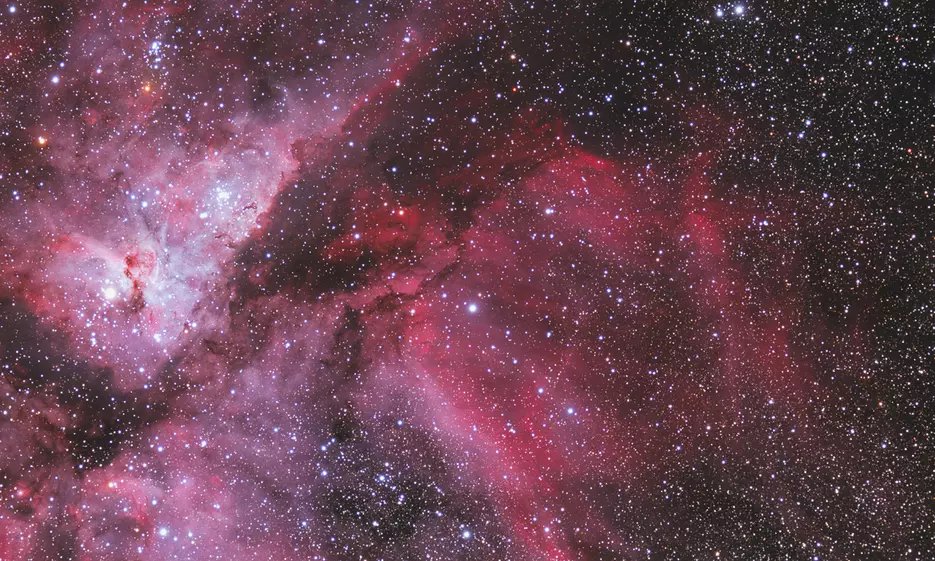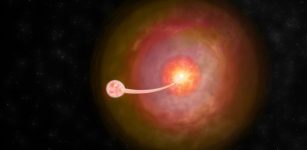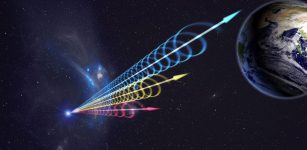Powerful Shock Waves In A Nova Explosion Observed By BRITE Constellation Mission
Eddie Gonzales Jr. – MessageToEagle.com – A team of five nanosatellites known as BRITE Constellation observes the complete development of a nova – from eruption to maximum brightness and burn out.
However, this event is something special and it happens for the first time.
 Position of Nova Carinae 2018 in the sky, taken on 5.4.2018. Credit: W. Paech & F. Hofmann, Chamaeleon and Onjala Observatory, Namibia
Position of Nova Carinae 2018 in the sky, taken on 5.4.2018. Credit: W. Paech & F. Hofmann, Chamaeleon and Onjala Observatory, Namibia
The BRITE’s observations are conducted from an altitude of about 800 km, and the mission has already studied more than 660 of the brightest stars in the sky.
Satellite images from the BRITE mission and astronomers from Graz University of Technology and the Universities of Innsbruck and Vienna, Austria document this unique event.
BRITE (BRIght Target Explorer) investigates the stellar structure and evolution of the brightest stars in the sky and their interaction with the local environment. Micropulsation, wind phenomena, and other forms of stellar variability are recorded via high precision photometry in two colors (red and blue).
These brightest massive stars are “laboratories” that help us to understand a wide range of astrophysical processes in our universe.
These shocks are much stronger than, for example, those generated by supersonic aircraft in our Earth’s atmosphere. Instead of sound, therefore, an enormous burst of light and high-energy radiation is produced, such as gamma and X-ray radiation.
This means that stars that could previously only be observed with telescopes can suddenly be seen with the naked eye.
“But what causes a previously unimpressive star to explode?
This was a problem that has not been solved satisfactorily until now,” Prof. Werner Weiss from the Department of Astrophysics at the University of Vienna said.
An explosion of Nova V906 in the constellation Carina (Latin: keel of a ship) has now provided answers and confirmed this explanatory concept, long after the explosion took place locally. After all, this nova is so far away from us that its light takes about 13,000 years to reach the earth,” explains Weiss.
The event could be documented by the BRITE Constellation between March and July 2018.
The BRITE Constellation observes stars with magnitudes between 0 and 6 in optical light, with the faintest stars just barely visible to the naked eye under excellent observation conditions.
Typically, 15 to 20 stars are measured continuously for about half a year in a 24 square degree field – an area as large as, for example, the entire constellation of Orion or the Plough (Big Dipper). The BRITE Constellation was initiated with the launch of the first two Austrian satellites, BRITE-Austria/TUGSAT-1 and UniBRITE in 2013. Poland and Canada joined in 2014 with one pair of identical satellites each.
Written by Eddie Gonzales Jr. – MessageToEagle.com Staff










